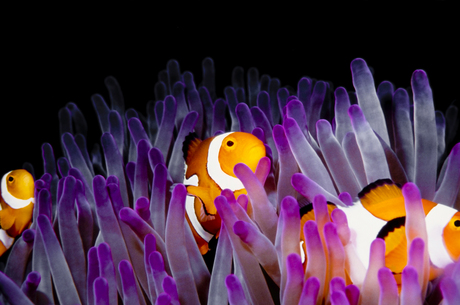Local organics action to help the Great Barrier Reef

The Great Barrier Reef is exposed to increasing pressures from climate change, rising sea temperatures, ocean acidification, land-based run-off and other pressures. The summer of 2016 has been bad for the Reef — one of Australia’s most iconic World Heritage sites — with high sea temperatures and rising nutrient and sediment loads in run-off resulting in 93% of the Reef being affected by coral bleaching.
The Queensland and federal governments are faced with the significant challenge of balancing environmental outcomes and social and economic demands of local and regional communities. Of the major threats to the Reef, the rising sediment and nutrients loads from land-based run-off is one of the few threats that can be tackled and managed with immediate positive impact.
The Queensland and federal governments have formulated a strategy for reef protection. The Reef 2050 Plan aims to have reduced nutrients by 50% and sediments by 20% and have 90% of the sugarcane production area operating under best management practices by 2020. This paper proposes a possible solution that integrates food and garden organics (FOGO) waste management with reef protection.
Sediment and nutrient threats to the Reef
The Reef extends for 2000 km along the north-east coast of Queensland. It was declared as a Marine Park in 1975 and as a World Heritage Area in 1981.
Despite this protected status, coral cover has declined from estimates of 50% in the 1960s to near 20% currently. Declining water quality is recognised as one of the greatest threats. Land run-off of suspended sediment (SS) and nutrients with the associated crown-of-thorns starfish (COTS) outbreaks roughly accounts for 37% of reef damage. COTS outbreaks are driven by increases in nutrient availability, particularly dissolved inorganic nitrogen (DIN), because nitrogen (N) is the main limiting nutrient. These nutrients originate from rivers along the Queensland coast.
Sugarcane is by far the most dominant crop in the catchments draining towards the GBR and occupies over 394,000 hectares within the GBR catchment. Sugarcane production occurs on the low-lying land close to estuaries, creeks and river mouths. This proximity means that during high rainfall events there is little opportunity for entrapment of run-off sediment and nutrients in-stream or in-basin. Researchers have calculated that approximately 5 kg N/ha/yr is leached and 1.6 t/ha/yr of SS runs off from sugarcane production areas. For the Reef lagoon, this means each year over 2700 tonnes of DIN and 1.3 million tonnes of SS threatens the ecosystem.
The contribution of composted food and garden organics
The population of the coastal local government areas, some 2.6 million people, generate 1.7 million tonnes of food waste and garden waste. Currently, virtually all of this waste goes to landfill, where it decays and produces methane, contributing to the nation’s greenhouse gas emissions. This material can be collected and composted to produce 1.2 million tonnes of quality compost to substitute for the mineral N fertilisers used in sugarcane production. This volume of composted FOGO would replace 46% of the nitrogen (N) and 80% of the phosphorus (P) requirements in sugarcane production.
The value for the reef in substituting mineral fertilisers with organic forms is that the organic forms are 50% less likely to leach into waterways. WJ Dougherty demonstrated this in sandy soils along the Hawkesbury-Nepean River in NSW. In addition, the organic matter itself helps bind soil and prevent erosion. Significant erosion prevention with the use of composts has been clearly demonstrated by the work of A Brooks, where compost blankets reduced gully erosion by 90%.
To collect this FOGO, local councils would need to introduce a ‘green bin’ with weekly collections. Since food waste would no longer be in the red bin, that service would drop to a fortnightly collection. MRA has calculated that the cost of providing a FOGO collection, a green bin, would be approximately $39 per household per year. A ‘willingness to pay’ study would determine if this was an acceptable price to pay for a contribution to Reef protection.
Conclusion
Composted FOGO can reduce the use of N by 46% and P by 80%. It will also reduce run-off by 50% and potentially contain erosion by 90%. Since both nutrient and sediment loads entering the reef lagoon are serious threats, the use of FOGO-generated compost could assist in providing a solution to both these issues and contribute to Reef protection.
Eco nappies could release nutrients into the earth
Researchers are developing sustainable sanitary products made from food waste that can either be...
Why private investment is key to a plastic circular economy
To get to a future where plastic circularity is a scalable reality, significant investment needs...
Aussie innovation turns waste into energy 'gold'
New technology that turns waste into reusable goods for energy and agricultural applications is a...











